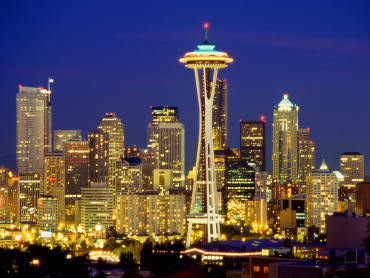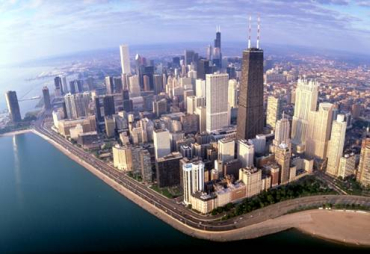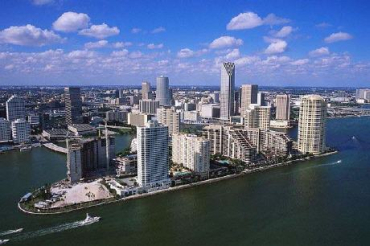Aziz Haniffa in Washington, DC
A highly skilled Indian sponsored today for employment-based immigrant visa would have to wait 70 years to receive a green card, say two new reports released by the National Foundation for American Policy, an Arlington, Virginia-based policy research group.
The reports conclude that exempting from green card quotas international students with an advanced degree in science, technology, engineering or mathematics would keep talented individuals from leaving the United States and "reap significant benefits to the competitiveness of US companies and to the economy overall".
The reports - Keeping Talent in America and Waiting and More Waiting: America's Family and Employment-Based Immigration System - feature first of their kind estimates of the wait times for immigrants by country and category and finds exempting highly educated immigrants in science-related fields from green card quotas will allow employers to retain the best talent from around the world.
The estimates are based on examining data from the US Department of State and US Citizenship and Immigration Services, as well as consulting with attorneys and government officials.
...
Skilled Indians may have to wait 70 years for US green card!
Image: Majority of employer-sponsored immigrants tend to be from India and China.The majority of employer-sponsored immigrants tend to be from India and China, but the wait times are longest for such foreign nationals because of the per country limit, which restricts the number of green cards awarded to any one country to seven per cent of a preference category, the report said.
By establishing that fewer than 3,000 Indians are permitted green cards annually in the employment-based third preference and, estimating a backlog of 210,000 among Indian professionals in the category, the report is able to conclude an Indian sponsored today would have to wait 70 years for a green card.
The report concludes that even if the backlog of Indians in EB-3 were half as large, the wait time would still exceed 30 years for Indians sponsored today in the category.
A Chinese immigrant sponsored today in the EB-3 category would have to wait two decades.
Immigrants from other countries would likely wait five years or more.
In the EB-2 (second preference) category the wait times are six to eight years for a newly sponsored Indian or Chinese immigrant, but there is no wait for those from other countries.
"It is not in our interests to have the most important characteristic of an immigrant to America be the ability to wait a long time," said Stuart Anderson, author of the two reports.
...
Skilled Indians may have to wait 70 years for US green card!
Image: Per country limit causes the delay.Anderson is NFAP's executive director and served as head of policy and counselor to the Commissioner of the Immigration and Naturalization Service from August 2001 to January 2003.
"Absent action by Congress the situation will grow worse, creating great hardship and weakening the competitiveness of US companies," he said. The long waits for employment-based green cards are caused by two primary factors - the 140,000 annual quota is too low and the per country limit, which restricts the number of green cards available to skilled immigrants from one country to seven per cent of the total.
Due to the per country limit, skilled foreign nationals from India and China, who generally make up most of the applicants, wait years longer than nationals of other countries.
The issue of wait times for employment-based immigrant visas is vital because when employers recruit at US universities they generally find one-half to two-thirds of the graduates in science, math and engineering fields are foreign nationals.
"Failure to retain these talented individuals in the United States means they will go to work for international companies in other countries or US businesses will need to place them abroad, pushing more work outside the United States," Anderson said.
...
Skilled Indians may have to wait 70 years for US green card!
Image: Eliminating the per country limit will cut the waiting period."An ability to offer a prized employee a realistic chance of staying in America as a permanent resident can be crucial to retaining that individual."
In addition to the high proportion of foreign nationals graduating in key fields from US universities, individual achievers make an important impact on the economy, he added.
A key part of any solution to reducing wait times is to eliminate the per country limit for employment-based immigrants.
The recently introduced bill HR 3012 in the US Congress, would eliminate the per country limit within four years.
Eliminating the per country limit would reduce the typical wait for Indians applying today in the EB-3 category from 70 to 12 years.
While 12 years is still too long, it would be a welcome reform that would provide green cards for Indian and Chinese professionals waiting the longest in the EB-3 and EB-2 (employment second preference) categories and equalize the wait times in the EB-2 category at about two to three years without regard to country of origin, as opposed to potential waits of six to eight years for Chinese and Indian nationals in the EB-2 category, he said.
Skilled Indians may have to wait 70 years for US green card!
Image: Availability of green cards is no better for most family-sponsored immigrants.An exemption from employment-based green card quotas of at least 25,000 or 50,000 for international students who graduate with an advanced degree in science, technology, engineering or math from a US university would further reduce the backlog and wait times, producing an even larger impact if combined with making available up to 326,000 employment visas unused in previous years, according to the reports.
An exemption of at least 50,000 for advanced degree STEM graduates would eliminate the backlog in the employment-based second preference (EB-2) and make the category current within three years.
It would also eliminate the employment-based third preference (EB-3) backlog and potentially make the category current within 10 years.
The reports said that this is a conservative estimate that assumes the annual flow of sponsored individuals and dependents matches the current quota for EB-2 (50,000) and EB-3 (35,040).
To the extent the annual flow is higher or lower, that would change the impact of a STEM exemption on backlogs and wait times.
According to the reports, the availability of green cards is no better for most family-sponsored immigrants.
The wait times vary for the categories, in part due to the application of per-country limits.
...
Skilled Indians may have to wait 70 years for US green card!
Image: Waiting periods for sponsoring a family member are very long.The reports said that liberalizing the per country limits for family immigrants would help those with the longest waits, while raising the quotas or utilizing unused family visas from prior years would reduce the overall waiting times.
The criticism that the US immigration system tilts toward family admissions rests, in part, on the assumption family members sponsored by US citizens quickly come to America and become permanent residents, which is not the case, the reports argued, noting that the wait times for sponsoring a close family member are long, in some cases extremely long.
A US citizen petitioning for an adult son or daughter from Mexico can expect to wait about 18 years, according to the reports, while some US citizens petitioning for a brother or sister from the Philippines have waited since before the fall of the Berlin Wall, more than 20 years.
It said, In November 2010, the State Department tabulated a waiting list of more than 4.5 million close relatives of US citizens and lawful permanent residents.
Contrary to popular belief, family immigration is not about "extended family".
...
Skilled Indians may have to wait 70 years for US green card!
Image: Raising the quota will also reduce the waiting period.A child 21 years or older is not a distant or "extended" family member, neither is a sibling, particularly given the closeness of many sibling relationships around the world.
Analysis finds "chain migration" is a contrived term that seeks to put a negative light on a phenomenon that has taken place throughout the history of the country - some family members come to America and succeed, and then sponsor other family members, they said.
Using numbers available from the US Citizenship and Immigration Services Ombudsman and the US Department of State shows 41 years would pass between the time a US citizen filed a petition for an adult son or daughter from Mexico in 1992 and someone in the sibling category sponsored by that adult child could immigrate in the year 2033.
That length of time does not sound like an "endless" chain of relatives, as is sometimes discussed, the reports sad and argued that unlike seemingly intractable budget or foreign policy issues, the problems with employment-based and family-sponsored green cards can be solved with small changes to the law.
For starters the reports said, eliminating the per country limit for employment-based immigrants and liberalizing it for family-sponsored immigrants would have an important positive impact.
Also, raising the quotas or providing targeted exemptions from those quotas, as well as utilizing unused visas from previous years could significantly reduce waiting time.








article